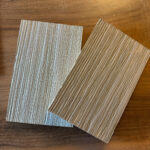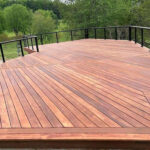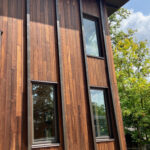
Poplar is a great utility species and probably one of the best hardwoods when you want a painted finish. It mills really easily, comes in all kinds of widths and lengths, and is dirt cheap. Or is it? It seems that the species that everyone want to use to save money is climbing in price pretty rapidly to the point where we have to question whether it is the economy wood to use anymore.
Since the beginning of 2012, the market has seen around a 10% increase in price for Poplar. It has many of our customers screaming foul because it is such a common species for interior trim and millwork. So what is behind this dramatic increase in what in reality is a highly plentiful species? Make no mistake there is no shortage of Poplar. US Forestry practices has ensured that replanting ratios can keep up with demand. Ultimately it is a myriad of factors that all run back to an economic recession.
Poplar is not a hardwood anyone is getting rich on. It is a low price, high volume industry. As new construction all but stalled during the peak of the recession, demand for Poplar and Red Oak plummeted. The mills that specialize in these species now cannot stay afloat and every week we hear of yet another sawmill closing it’s doors. With lower demand and fewer sawmills to harvest and product Poplar lumber, national harvest numbers have dropped from around 10 billion feet to only 6 billion feet.

Now many of us are optimistic that the economy is turning around. It definitely seems that new construction is on the rise. Now however, the demand for Poplar climbs dramatically but production levels are the lowest they have been in years. Compound that with fewer mills to produce more lumber and you get a dramatic price increase. The silver lining to all this is that all of this has happened before. Call it the circle of life for species like Poplar and Red Oak. History has shown us that the industry is capable of out producing demand and as the existing mills ramp up production and new mills come online, over production will start to happen again. Of course at this point, the price will start to fall again. Take a look at Red Oak as an example. A run of massive over production has left the inventories of the species flush everywhere. With demand so low and stock so high the price dropped dramatically. Current Red Oak prices are on par with pricing from the 1970s!
So no one can really say how long the price increase will continue for Poplar but we can expect it to correct itself at some point. If you want to be optimistic, look at the rise in Poplar cost to be a sign of a recovering economy.
Just try explaining that to your wallet…









Leave a Reply